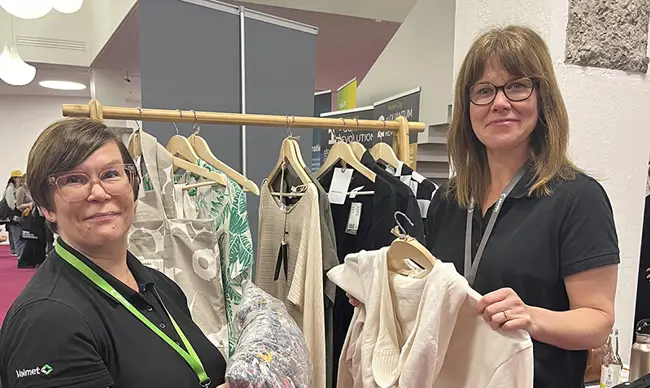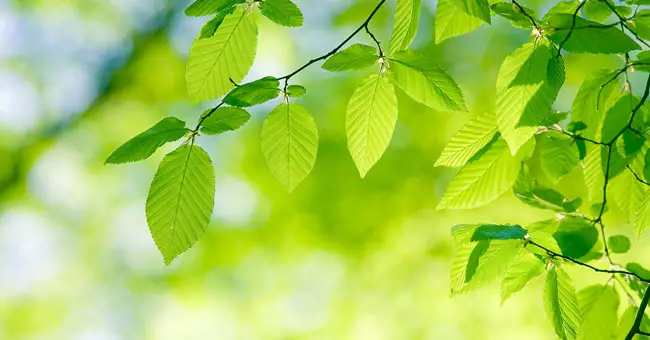Going towards the 4th wave of growth - Insights and trends from Cellulose Fibres Conference 2024

Cellulose fibers are leading the charge in replacing single-use plastics and also taking part in building a more sustainable growth in the textile market. 100% cellulose-based recyclable barrier papers for food packaging are already in the market and textiles from novel and recycled fibers are available for the consumers.
The Cellulose Fibres Conference, held in Cologne, Germany, in March brought together experts from around the world to explore the world of cellulose fibers. These fibers, derived from plant cell walls, offer immense potential for sustainable solutions across various industries. Let’s delve into our key takeaways from this conference.
Main drivers for future growth
The primary drivers propelling the growth of cellulose fibers include demand for sustainability from consumers and legislation, and a shift away from using controversial virgin materials, both synthetic and natural, such as cotton.
EU Strategy for Sustainable and Circular Textiles, adopted in 2022, lays the foundation for the future development of textile industry, stating that by 2030, textile products placed on the EU market are long-lived and recyclable, to a great extent made of recycled fibers, free of hazardous substances and produced in respect of social rights and the environment.
Regulatory awareness and proactivity
It is crucial to stay informed about upcoming regulations. In the case of man-made cellulosic fibers (MMCF) for example, proactive measures were necessary to prevent classifying MMCF as plastics within EU due to the similarities in the chemical process. Unlike plastics, which are synthetic polymers, MMCFs have a cellulosic origin.
Currently, the focus of the legislation is on Eco-design for Sustainable Products Regulation (ESPR), biodegradation and circular economy. ESPR is a guideline for designing products with environmental considerations. Biodegradation addresses the environmental impact of materials and circular economy promotes resource efficiency and minimization of waste.
Transition in Man-made Cellulosic Fiber value chain
From the early 2000, we have seen the MMCF market growing in waves by adapting new geographical markets from China to Latin America. Now we can anticipate the 4th wave of growth when textile waste and agricultural residues are poised to become essential raw materials and building the circular economy further.
Growth drivers in the value chain are economic expansion, reduced reliance on cotton, and advancements in MMCF technologies. A shift from specialty to commodity can be seen as manufacturing costs for dissolving wood pulp are decreasing, which is leading to a flattening cost curve.
Open collaboration shaping the industry
Industry is working together to shape the future of sustainable textiles, fostering innovation and collaboration. Valmet, as one of the key players in fiber know-how and new technologies, is keen to take part in events like Cellulose Fibre Conference to learn about the latest developments in the field and discuss with other interested stakeholders.
Valmet aims at developing and commercializing novel process concepts and related equipment together with the technology owners. We believe that companies with expertise in fiber processing, such as Valmet, are crucial partners in the development of processes for textile recycling and manufacturing of novel cellulose-based textile fibers. Our piloting facilities enable demonstration, scaling-up and mitigation of risks. However, we also recognize that no single company can do the development work alone but collaboration as well as actions and investments are needed from all stakeholders in the value chain. The collaboration needs to be real, with natural roles for partners and openness among them. Even though the market is still under development, we see significant potential there due to increased consumer awareness, developing legislation and a growing need for sustainable textile fibers.

Read more about textile production

What is a cellulose fiber?
Cellulose fibers are obtained from plant sources like wood and annual plants. Cellulose is a polymer composed of repeating glucose units. There are natural cellulose fibers (e.g., cotton and linen) recognizable from the original plant, and manufactured cellulose fibers (e.g., rayon and cellophane) produced through specific processes. Cellulose fibers can be used in the textile industry, as chemical filters, and in fiber-reinforced composites due to their properties.
Read more about Valmet´s approach to textile industry

